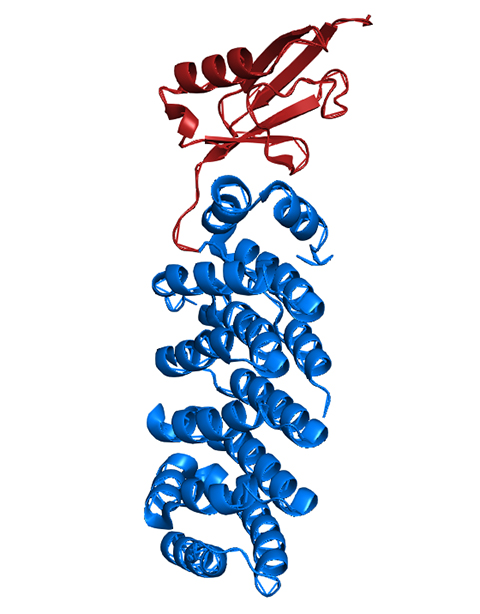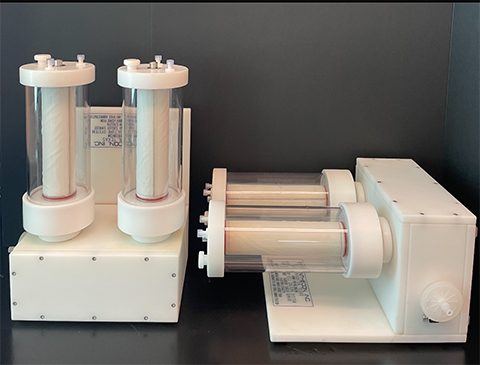New insights into how cells respond to altered gravity experienced in space
A new study has revealed insights into how cells sense and respond to the weightlessness experienced in space. The information could be useful for keeping astronauts healthy on future space missions.

The gravity conditions in space, known as microgravity, trigger a unique set of cellular stress responses. In the new work, researchers found that the protein modifier SUMO plays a key role in cellular adaptation to simulated microgravity.
“Under normal gravity conditions, SUMO is known to respond to stress and to play a critical role in many cellular processes, including DNA damage repair, cytoskeleton regulation, cellular division and protein turnover,” said research team leader Rita Miller, a professor of biochemistry and molecular biology at Oklahoma State University in Stillwater. “This is the first time that SUMO has been shown to have a role in the cell’s response to microgravity.”
Jeremy Sabo, a graduate student in Miller’s laboratory, will present the findings at Discover BMB, the annual meeting of the American Society for Biochemistry and Molecular Biology, March 25–28 in Seattle.
SUMO can interact with proteins via two types of chemical bonds: a covalent attachment to a target lysine or noncovalent interactions with a binding partner. The researchers looked at both types of interactions in yeast cells, a model organism commonly used to study cellular processes. They analyzed cells that had undergone six cellular divisions in either normal Earth gravity or microgravity simulated using a specialized cell culture vessel developed by NASA.

To understand which cellular processes were affected by the stress of microgravity, they began by comparing the levels of protein expression for cells that experienced each gravity condition. Then, to find out what was driving these protein changes, they looked more specifically at which of these proteins interacted with SUMO using mass spectroscopy.
In the cells experiencing microgravity, the researchers identified 37 proteins that physically interacted with SUMO and showed expression levels that differed from that of the Earth gravity cells by more than 50%. These 37 proteins included ones that are important for DNA damage repair, which is notable because radiation damage is a serious risk in space. Other proteins were involved in energy and protein production as well as maintaining cell shape, cell division and protein trafficking inside cells.
“Since SUMO can modify several transcription factors, our work may also lead to a better understanding of how it controls various signaling cascades in response to simulated microgravity,” said Miller.
Next, the researchers want to determine whether the absence of the SUMO modification on specific proteins is harmful to the cell when it is subjected to simulated microgravity.
Jeremy Sabo will present this research from 4–5:30 p.m. PDT on Tuesday, March 28, in Exhibit Hall 4AB of the Seattle Convention Center (Poster Board Number 330) (abstract). Contact the media team for more information or to obtain a free press pass to attend the meeting.
Enjoy reading ASBMB Today?
Become a member to receive the print edition monthly and the digital edition weekly.
Learn moreGet the latest from ASBMB Today
Enter your email address, and we’ll send you a weekly email with recent articles, interviews and more.
Latest in Science
Science highlights or most popular articles

New class of antimicrobials discovered in soil bacteria
Scientists have mined Streptomyces for antibiotics for nearly a century, but the newly identified umbrella toxin escaped notice.

New study finds potential targets at chromosome ends for degenerative disease prevention
UC Santa Cruz inventors of nanopore sequencing hail innovative use of their revolutionary genetic-reading technique.

From the journals: JLR
How lipogenesis works in liver steatosis. Removing protein aggregates from stressed cells. Linking plasma lipid profiles to cardiovascular health. Read about recent papers on these topics.

Small protein plays a big role in viral battles
Nef, an HIV accessory protein, manipulates protein expression in extracellular vesicles, leading to improved understanding of HIV-1 pathogenesis.

Genetics studies have a diversity problem that researchers struggle to fix
Researchers in South Carolina are trying to build a DNA database to better understand how genetics affects health risks. But they’re struggling to recruit enough Black participants.

Scientists identify new function of learning and memory gene common to all mammalian brain cells
Findings in mice may steer search for therapies to treat brain developmental disorders in children with SYNGAP1 gene mutations.

